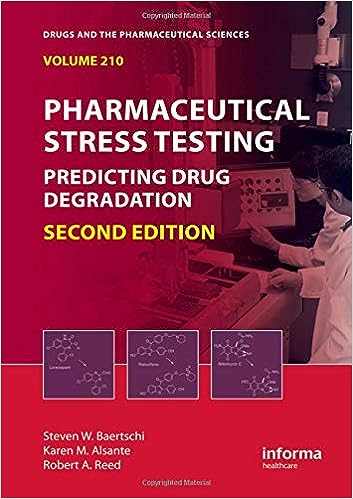Step-by-Step Guide to Designing Stability Programs for Emerging Market Compliance
Introduction
Pharmaceutical companies aiming to expand into emerging markets face unique regulatory and environmental challenges. Stability testing programs must be tailored to meet the specific requirements of each target region while addressing climatic conditions, infrastructure constraints, and regulatory variability. This step-by-step guide provides a comprehensive approach to designing stability programs that ensure compliance in emerging markets, focusing on Good Manufacturing Practices (GMP) and global harmonization standards like ICH Q1A(R2).
Step 1: Understand Regional Regulatory Requirements
Each emerging market has distinct stability testing requirements that may align with or
- Regulatory Frameworks: Familiarize yourself with local regulatory bodies, such as CDSCO in India, SFDA in Saudi Arabia, or ANVISA in Brazil.
- Additional Data Needs: Some markets may require specific studies, such as photostability or stress testing, beyond ICH requirements.
Tip:
Collaborate with local regulatory consultants to ensure a clear understanding of regional expectations.Step 2: Identify Relevant Climatic Zones
Emerging markets often fall under Climatic Zones III (hot and dry) or IV (hot and humid). Stability programs must reflect these conditions:
- Zone III: 30°C ± 2°C / 35% RH ± 5% RH.
- Zone IVa: 30°C ± 2°C / 65% RH ± 5% RH.
- Zone IVb: 30°C ± 2°C / 75% RH ± 5% RH.
Tip: Include long-term and accelerated stability studies tailored to the target region’s climate.
Step 3: Customize Stability Protocols
Develop stability protocols that address the specific needs of emerging markets. Key elements include:
- Test Parameters: Evaluate critical quality attributes, such as potency, dissolution, and microbial stability.
- Storage Conditions: Use controlled chambers that simulate real-world conditions in the target market.
- Duration: Conduct long-term studies for at least 12 months and accelerated studies for six months.
Tip: Include packaging materials in your protocols to assess their impact on stability.
Step 4: Select Representative Batches
Regulatory authorities require stability testing to be conducted on representative batches. Ensure that:
- At least three primary batches are tested.
- Batches represent the final formulation and packaging configuration.
Tip: Use pilot-scale batches initially and transition to production-scale batches for ongoing studies.
Step 5: Conduct Stability Studies
Perform stability testing under specified conditions in validated chambers:
- Long-Term Testing: Evaluate the product under standard storage conditions for the region.
- Accelerated Testing: Simulate long-term effects in a shorter period at 40°C ± 2°C / 75% RH ± 5% RH.
Tip: Use automated systems to monitor temperature and humidity continuously, ensuring compliance with regulatory standards.
Step 6: Monitor and Analyze Data
Collect stability data at regular intervals (e.g., 0, 3, 6, 9, and 12 months) and analyze trends. Key steps include:
- Compare results against predefined acceptance criteria.
- Identify significant changes in physical, chemical, or microbiological attributes.
- Use statistical tools to predict shelf life and storage conditions.
Tip: Document all findings and address deviations promptly to ensure data integrity.
Step 7: Address Packaging Requirements
Packaging plays a crucial role in maintaining stability, especially in hot and humid climates. Key considerations include:
- Test the interaction between the drug product and packaging materials.
- Use moisture-resistant or light-blocking packaging for sensitive formulations.
Tip: Conduct packaging compatibility studies early to prevent delays in product approval.
Step 8: Prepare for Regulatory Submissions
Compile a comprehensive stability report tailored to the requirements of the target market. Include:
- Data from long-term, accelerated, and intermediate studies.
- Justifications for proposed shelf life and storage conditions.
- Evidence of compliance with local and international guidelines.
Tip: Use standardized templates to facilitate submissions across multiple regions.
Challenges in Designing Stability Programs for Emerging Markets
Stability testing for emerging markets can present unique challenges:
- Infrastructure Constraints: Limited access to advanced stability chambers and testing facilities in some regions.
- Regulatory Complexity: Navigating varying requirements across multiple markets can be daunting.
- Cost Implications: Conducting extensive stability studies for multiple climatic zones requires significant investment.
Tip: Partner with local contract research organizations (CROs) to overcome infrastructure and resource limitations.
Best Practices for Emerging Market Compliance
To ensure success, manufacturers should adopt the following best practices:
- Plan Stability Studies Early: Incorporate stability testing into the initial development stages to avoid delays during submissions.
- Engage with Regulatory Experts: Work with consultants familiar with the target market’s requirements.
- Leverage Technology: Use advanced data management systems to streamline analysis and reporting.
- Validate Equipment: Ensure that stability chambers are calibrated and maintained regularly to meet regulatory standards.
- Train Personnel: Provide comprehensive training on local and international stability guidelines.
Emerging Trends in Stability Testing for Emerging Markets
Several trends are shaping stability testing practices in emerging markets:
- Predictive Modeling: Advanced tools are being used to forecast stability trends, reducing reliance on extended studies.
- Digital Transformation: Automated systems improve data accuracy and streamline regulatory submissions.
- Sustainability: Eco-friendly packaging materials and optimized protocols align with global environmental goals.
Conclusion
Designing stability programs for emerging market compliance requires a strategic approach that balances global standards with local regulatory expectations. By understanding regional requirements, tailoring stability protocols, and leveraging advanced technologies, manufacturers can ensure the quality and safety of their products while achieving regulatory approval in diverse markets. With careful planning and adherence to best practices, stability programs can support the successful expansion of pharmaceutical products into emerging markets.

